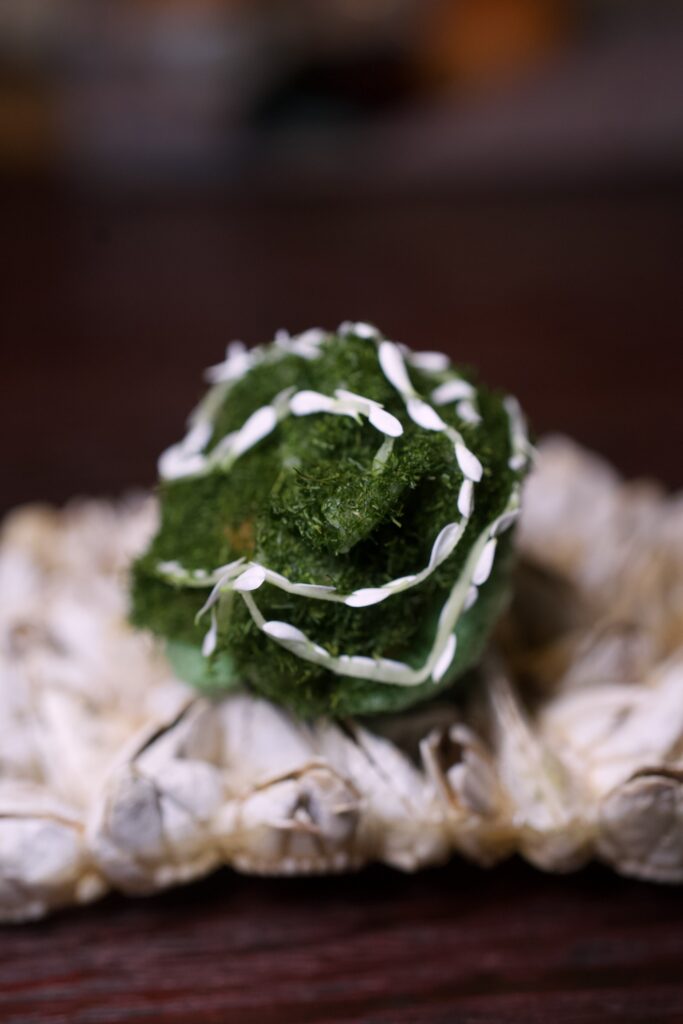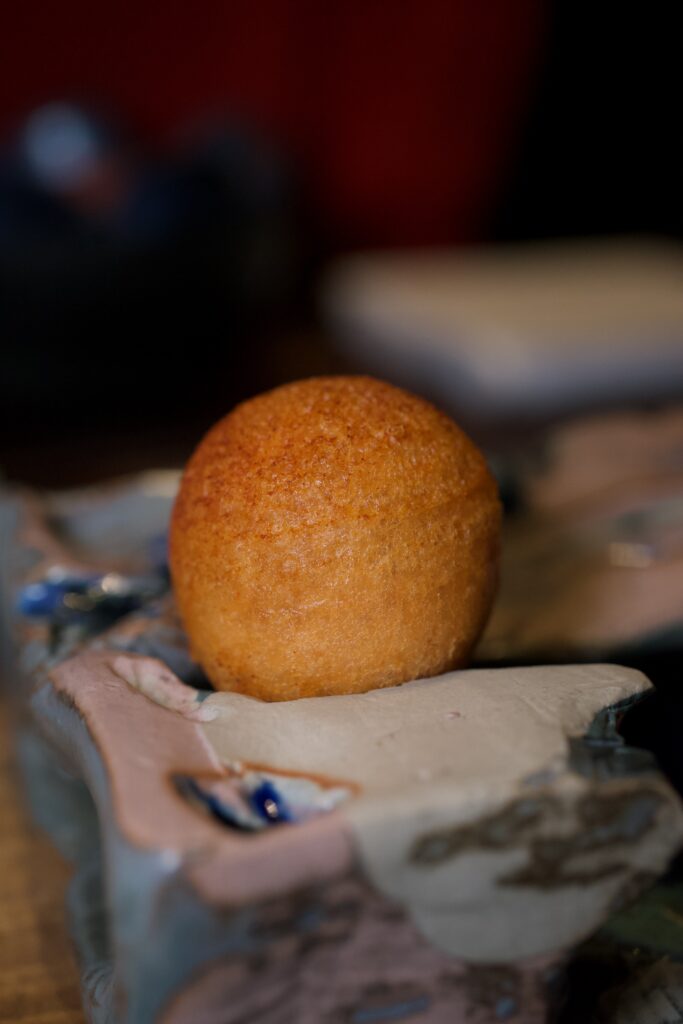The first time I met my wife was at a dinner at Central. That special evening led us back there for our wedding day, and we’ve returned many times since. Central holds a unique place in my heart for obvious reasons. Over the years, we also became friends with Santiago, who is now the head chef at Maz.
Maz opened in 2022, and we had the opportunity to try it for the first time about a year later. Even then, it left a strong impression, though it was clear the team was still finding its footing as a new restaurant. Fast forward another year, and Maz made its debut in the Michelin Guide, entering directly with two stars. This elevated my expectations for this visit even further.
While a visit to Central is a journey through the ecosystems of Peru, a visit to Maz takes you through the ecosystems of Japan, filtered through the perspective of a Peruvian chef.
Coastal Sea Floor – 10 MBSL (Meters Below Sea Level)



The experience began with a small series of snacks inspired by the coastal areas, featuring mussels, uni, razor clams, and seaweed. From the very first bite, the evolution since our last visit was obvious. The technical execution and complexity of the dishes were remarkable, showcasing just how much the team has grown. The flavors, unsurprisingly, were spot-on.
Desert Shoreline – 18 MASL (Meters Above Sea Level)


Beyond flawless technique, the next dish stunned me with its intricate presentation, adding yet another layer to the experience. A tiny crab, deep-fried and covered in flowers, was placed atop small langoustines. The centerpiece of the dish was a “Japanese version” of the traditional Peruvian langoustine soup. Here, it was served with ebi (langoustines) and a deep, rich lobster sauce, topped with slices of pasta-like textures dusted with chili powders.
Cold Sea Waters – 5 MBSL


The cold waters of Hokkaido yield some of the world’s finest shellfish, often sought after and exported globally. In this dish, scallops were paired with a classic tiger’s milk—a perfect match for their delicate texture. Alongside, there was a crisp made from scallop roe, packed with umami. Once again, I find myself repeating: the technical execution and flavors were flawless.
Preservation – 3680 MASL


For me, this dish marked a turning point. It highlighted how Santiago has not only embraced Japan but also gained fresh perspectives on Peruvian traditions. In Peru, alpaca meat is often sun-dried, but here, Santiago opted for wagyu carpaccio paired with a corn crisp. On the side was a revelation: seco de carne, a classic Peruvian stew with rice. While this dish is a staple in Peruvian homes, I had never encountered it in fine dining. Naturally, this version was miles ahead of anything I’d had before. It also showed Santiago’s confidence to present dishes that deviate from Central’s style.
Fresh Water – 178 MASL


South America’s largest freshwater fish, the paiche, is renowned for its intensely rich flavor. To mirror this, Maz used the largest freshwater fish in Japan. It was served with an artistic black mushroom web and carefully placed ikura, alongside a fermented coconut cream split with Peruvian dye achiote. While technically well-executed, this dish didn’t resonate with me as deeply as the others.
Ocean Haze – 20 MBSL

This dish came with a striking sculpture of dried octopus, holding our spoons. Beside it was a beautiful glass bowl filled with grilled octopus, three types of seaweed, and a spirulina foam. The smoky, chewy octopus was delicious, and the crunchy, umami-rich seaweed provided the perfect complement.
Woods in the Highlands – 3260 MASL


This dish epitomized the evolution of Maz and Santiago. It presented two distinct elements: one Japanese, one Peruvian. The Japanese element—a simply grilled abalone mushroom with chili and salt—was so perfectly executed it could have come from a kaiseki master. The Peruvian element was the polar opposite: arroz con pato, a classic rice-and-duck dish. True to Maz’s two-star status, it was elevated with crispy elements and topped with egg yolk strings. This duality exemplified Santiago’s ability to honor both traditions with equal reverence.
High Jungle Rainforest – 750 MASL

This dish, featuring grapes with maca and bee pollen, leaned on simplicity. Maca, a renowned Peruvian “performance enhancer” with health benefits, was paired with Japanese grapes and a brown butter emulsion. While the presentation was elegant, it didn’t captivate me as much as other courses.
Amazonia – 840 MASL



At Central, ending with a cacao degustation has become a tradition, showcasing the cacao plant’s many facets. In Japan, where fresh cacao isn’t available, Santiago substituted certain elements with nuts and included a smoky dulce de leche from his native Venezuela. This personal touch was both unexpected and delightful.
Pairings



Both the wine and non-alcoholic pairings were excellent. While I enjoyed the wine selection, which focused on Latin American producers, my wife’s non-alcoholic pairing was the standout. Non-alcoholic pairings often feel more creative, with intricate presentations and thoughtful tailoring to the food. In this case, they highlighted classic Peruvian ingredients and flavors more effectively than the wine.
Maz has clearly evolved into a restaurant with its own identity, distinct from Central. To me, that’s the hallmark of greatness: establishing a unique voice regardless of the chef’s origins or the owner’s influence.
I loved how purely Japanese and Peruvian flavors came together on this menu, reflecting Santiago’s growth as a chef and his confidence to step out of Virgilio’s shadow. Maz and Central remain connected, but Maz feels like a reflection of Japan and Santiago’s personal journey.


To me the evolution is across every part of the restaurant from the food to the pairing on not least a lot of smaller details about the presentations such as using a paiche skin to hold spoons,
It’s exciting to see a restaurant coming into its own, and with this evolution, Maz is firmly establishing itself as a destination in its own right. It’s clear Santiago and his team are just getting started.
Practical information
Location: Tokyo Japan
Head Chef: Santiago
Menu: 9 course tasting menu 30.000 yen ($200)




No Comments